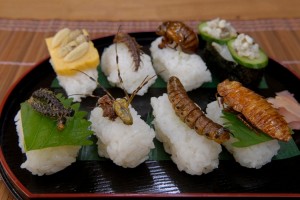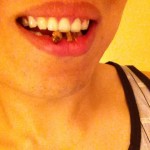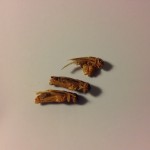You may have heard that, in a not too distant future, there will be a point where meat becomes so scarce that you and I may have to find alternative source of animal protein, say, from BUGS. Yes, I totally understand that you would rather become a vegetarian than see bugs on your dish.
(Photo Credit From mad4scinence.com)
But believe it or not, it turns out that we CAN and indeed we have EATEN them for many years!
According to the UN’s Food and Agriculture Organization, insects form part of diets of at least 2 billion people around the world. Surprisingly, there are more than ONE THOUSAND NINE HUNDRED species people eat as delicious cuisine (Yen at Al). Although insect-eating is not widespread in the western world, such as in Europe, North America and Australia, insects (including other species of invertebrates) are regularly eaten today in Africa, Asia, Central America and South America. Moreover, eating insects can be very environment-friendly and a potential solution to the global food shortages. Add to that, farming insects produces less greenhouse gases, and therefore, is a more efficient way to produce sustainable protein. (http://www.fao.org/docrep/018/i3253e/i3253e00.htm)
Still for some people, the idea of tossing these creeping, crawling creatures into your mouth may sound too daring, even though insects can be quite tasty and nutritious. So I have decided to embark on a journey of eating insects, simply to convince you that eating them is a fun and practical experience. So let me draw your attention to one of very common bugs you see around. Crickets!
Crickets belong to the family of Gyllidae under Orthoptera order. Four crickets contain as much as calcium as a cup of milk. If you eat 100 grams of crickets, you are consuming 121 calories (ONLY 49.5 calories from FAT) and as much as 13 grams of protein and 76 milligrams of iron. (http://www.menshealth.co.uk/food-nutrition/healthy-eating/the-nutritional-value-of-insects) (http://www.menshealth.co.uk/food-nutrition/healthy-eating/the-nutritional-value-of-insects)
Conveniently, I was able to find processed crickets in a vending machine at the Natural Science Museum in Houston during my class trip.
As I rushed back home to savor the taste and flavor of the bug, I carefully poured my cheese-seasoned crickets on my dinner table. With a single deep, solemn breath I put one of these tiny creatures into my mouth.
At first, the smell of cheese-and-bacon seasoning was a bit strong, which made it difficult for me to focus more on the taste of bug, but as I kept chewing it, a nutty flavor along with crunchiness that resembled the sensation of chewing dried shrimps started to fill my mouth. Although I could definitely feel one of the cricket’s legs and a part of his wing stuck in my teeth, eating crickets overall was a very pleasing experience.
(Photos taken by Hansol Park)
Knowing that commercialized foods can sometimes deter us from appreciating the true taste of the nutrients, I have decided to prepare a real dish made out of bugs for my upcoming blog posting. There will be lots of chopping, steaming, and seasoning involved. Please look forward to my next posting!
🙂
Further Citation;
Yen, Alan. At all. ‘The Role of Edible Insects in Human Recreation and Tourism.” Ed. Raynald Harvey Emilin. Cambridge University Press. 2013. Online Fondren Library.
Deutsch, Jonathan. ‘They eat That?: A Cultural Encyclopedia of Weird and Exotic Food from Aroud the World.’ Google Ebook 2012. Online Fondren Library.



